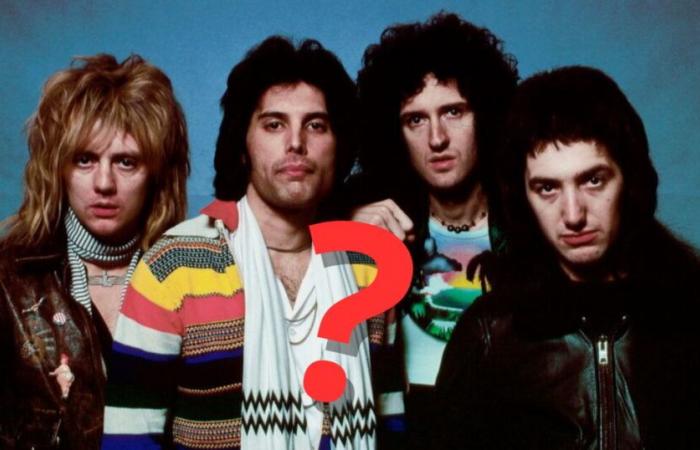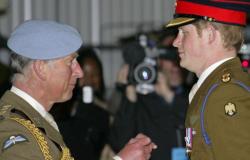Three of the four members of Queen, a legendary British rock group, have a remarkable scientific background. Between astrophysics, biology and electronics, their scientific skills are no stranger to their success. A look back at the fascinating journeys of these polymath artists.
No, Freddie Mercury was not a scientific genius. Disappointed ? As much as Bohemian Rhapsody ? Certainly not… Her three sidekicks, on the other hand, are a completely different story… A little-reported fact, compared to their immense career: Queen is not not only one of the most iconic rock groups in the history of music, but also an example of a meeting between artistic creativity and scientific rigor. Of the four members of the group, three of them: Brian May, guitarist, Roger Taylor, drummer and John Deacon, bassist – followed a scientific course. Queen is a wonderful example of how science and music can feed each other. Based in 1970the group quickly imposed its style inimitable thanks to sophisticated arrangements, complex harmonies and daring experiments. This perfectionism finds its roots in the scientific discipline of its members, who all had to juggle between the rigors of studies and the demands of the stage. A background that influenced the way Queen approached songwriting and production, using technology and ingenuity to push the boundaries of musical innovation. Return to the scientific double life of these music legends.
Brian May: pioneer of astrophysics
Brian May, le star guitarist of the group, never gave up his love for the stars. Of the three, he is undoubtedly the most science buff, but above all, the one who pushed the furthest his second passion. Diploma in physics and mathematics at theImperial College from London, he began a thesis on the zodiacal lighta phenomenon linked to interplanetary dust reflecting sunlight. But in 1974the growing success of Queen forced him to pause your search. In 2007after more than 30 years, he returns to his studies to finalize his thesis, becoming doctor in astrophysics. His scientific work contributed to better understand the composition and movements of dust in our solar system. According to Astronomy Magazinehe also collaborated with NASA on the OSIRIS-REx mission, dedicated to the asteroid “Bennu”, and co-wrote a 3D atlas of this celestial object. Passionate about stereoscopyhe designed three-dimensional images from space probe data, helping researchers choose landing sites. May didn’t never stopped combining his hobbies. Co-founder of festival “Starmus”it celebrates the links between science and music by bringing together renowned artists and scientists, such as Stephen Hawking or Neil Armstrong. During his concerts, space projections often accompany his solos, embodying his love for astronomy.
Roger Taylor: repressed dentist and mad experimenter
Roger Taylor, in addition to being the drummer, and also singer, emblematic of Queen, first distinguished himself in the academic field. He started dental studies au London Hospital Medical College before reorient yourself towards biologyobtaining a diploma in science. Its scientific rigor has profoundly marked his musical approach. Taylor was recognized for his unique drumming, combining precision and daring. His sense of analysis pushed him to integrate innovative rhythms and complex harmonieswho largely contributed to sound identity by Queen. His role in the studio was not limited to drumming: he was an inveterate experimenter, testing new recording techniques and innovating in the use of instruments. Among his notable compositions, I’m in Love with My Car, song dedicated to his passion for cars, remains a striking example of his creative spirit. To capture the power and rhythm of an engine, Taylor experimented using natural sounds and edited recordings, including engine noises that he integrated as rhythmic elements. His hoarse and passionate voice, recorded with a technique emphasizing low frequencies, gives the song a unique intensity. This title, which he also performed as lead singer, reflects the legacy conferred by his studies in science, where method and experimentation are fundamentalto the delight of our ears.
John Deacon: when electronics forge an identity
John Deacon, often described as the most discreet member of Queen, played a key role not only as bassistbut also like avant-garde sound engineer. Graduated in electronic of Chelsea Collegehe put his technical skills at the service of the group’s music. Deacon designed the famous Deacy Ampa handcrafted amplifier that allowed Brian May to create new and distinctive sounds. This device, without a potentiometer and made from recovered components, has become a central element of Queen’s sonic identityespecially for its distortions and innovative effects at the time. At the same time, Deacon demonstrated remarkable talent as a composer. He is responsible for some of the group’s biggest hits, including Another One Bites the Dusta song with funk accents that marked the history of rock. Nothing to do with science yet. Although… His compositions are distinguished by their unique blend of technical rigor and artistic sensitivity, testifying to son double talent visionary musician and engineer.
The atypical journeys of May, Taylor and Deacon have profoundly influenced the history of Queen. Their scientific rigor is reflected in their constant quest for perfection, their ability to experiment and their mastery of cutting-edge technologies. Brian May, Knight of the British Empire since 2023continue promote science education via Starmus. Roger Taylor and John Deacon, although more discreet, remain inspiring figures for budding musicians and scientists. Queen is not only a rock monument, but also a symbol of harmony between science and art. As if music legend wasn’t enough…
Sources :
- “Brian May: Where astronomy meets rock ‘n’ roll”Astronomy Magazine, 14 novembre 2023
- “Queen guitarist and astrophysicist Brian May to release 3D atlas of asteroid”The Guardian, 23 juillet 2023
- “Queen, three scientists for a rock quartet”Sciences and Life, March 16, 2023
- “Meet the rock guitarist who helped NASA land on an asteroid”National Geographic, 4 octobre 2023
- “Brian May and Patrick Michel explain the production of stereo images of asteroids”Futura Sciences, 2023
You may also be interested in:
Where do meteorites that fall to Earth come from?
Why is Freddie Mercury’s voice so exceptional? Science answers!
Mylène Farmer: How science explains her success
“Club des 27”: Are music legends cursed? Science responds to this crazy theory!






